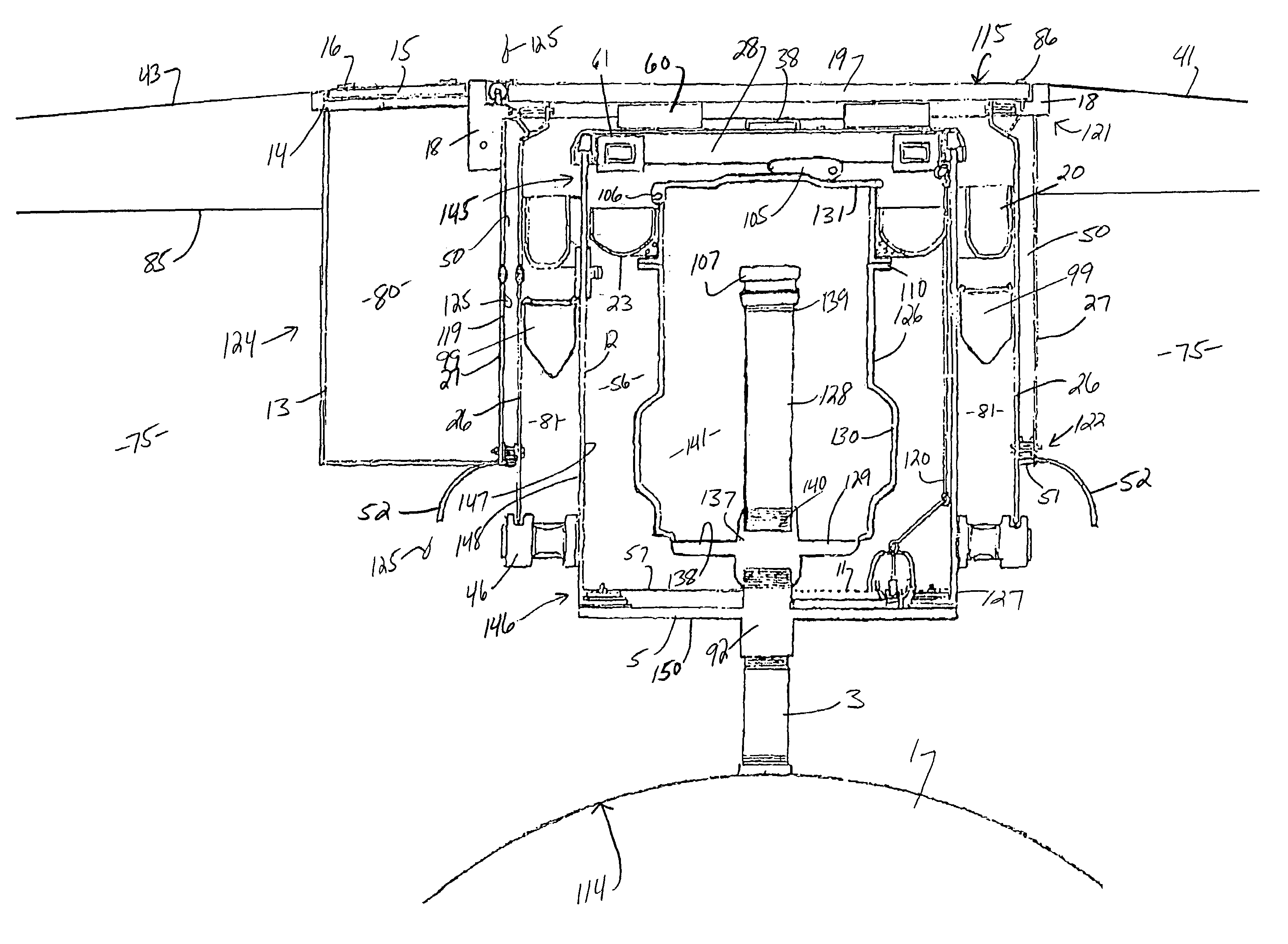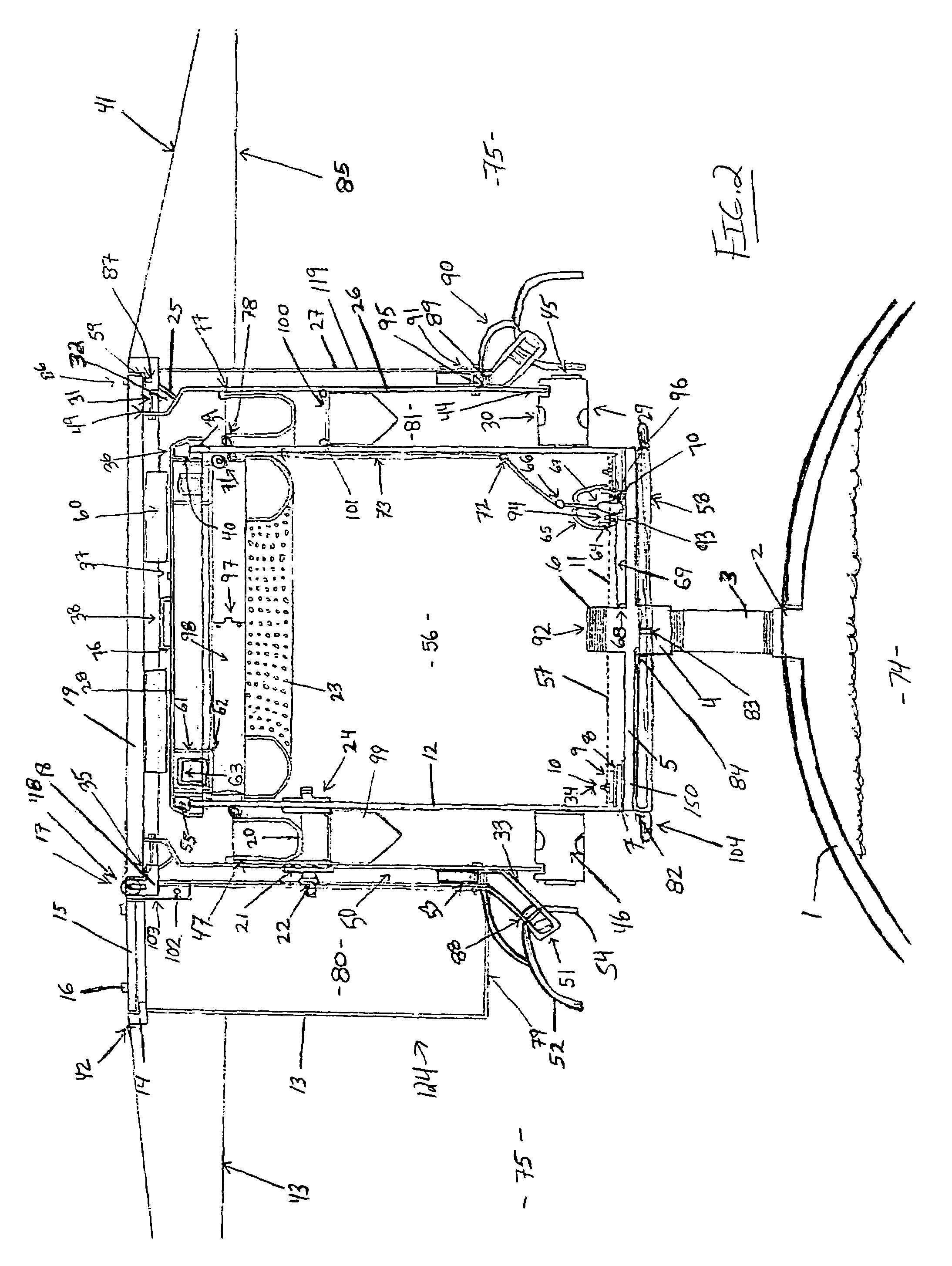Spillage containment system and kit for underground storage tanks
a technology for underground storage tanks and containment systems, applied in the field of underground storage tank containment systems and kits, can solve the problems of contaminated fill locations, deterioration, and aging of underground storage tanks, and achieve the effect of eliminating potential and reducing the collection point of spillag
- Summary
- Abstract
- Description
- Claims
- Application Information
AI Technical Summary
Benefits of technology
Problems solved by technology
Method used
Image
Examples
Embodiment Construction
)
[0224]Referring now to the drawings, a preferred embodiment of the present invention concerns spillage-containing means for isolating certain matter from adjacent compartments or regions commonly associated with underground storage tanks. The spillage-containing means or matter-isolating means are defined, in part, by a spillage containment system comprising certain spillage containment assemblies and a unique manhole assembly. The present invention thus discloses a spillage containment system for use in combination with an underground storage tank assembly comprising a storage tank 1 as illustrated and referenced in FIG. Nos. 1, 2, 5, 6, 8–10, and 17; a tank access conduit 3 (preferably a 4-inch pipe nipple (cut to length per application)) as illustrated and referenced in FIG. Nos. 1, 2, 5, 6, 8–10, and 17. From a general consideration of the noted figures and from a particular inspection of FIG. No. 2, it will be seen that tank access conduit 3 preferably comprises male threads a...
PUM
| Property | Measurement | Unit |
|---|---|---|
| Flexibility | aaaaa | aaaaa |
Abstract
Description
Claims
Application Information
 Login to View More
Login to View More - R&D
- Intellectual Property
- Life Sciences
- Materials
- Tech Scout
- Unparalleled Data Quality
- Higher Quality Content
- 60% Fewer Hallucinations
Browse by: Latest US Patents, China's latest patents, Technical Efficacy Thesaurus, Application Domain, Technology Topic, Popular Technical Reports.
© 2025 PatSnap. All rights reserved.Legal|Privacy policy|Modern Slavery Act Transparency Statement|Sitemap|About US| Contact US: help@patsnap.com



